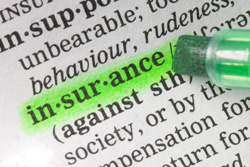 The OH&S acts do not distinguish between your responsibilities to your employees, contractors or visitors. If you are in control of your workplace, you must be in control of your visitors. Here we suggest some time proven effective measures, which you should apply to all your visitors, for the duration of their visit to your workplace. You need to ensure that visitors are aware of their responsibilities and that visits are properly inducted so as to ensure visitors do not inadvertently cause any harm to themselves or your personnel.
The OH&S acts do not distinguish between your responsibilities to your employees, contractors or visitors. If you are in control of your workplace, you must be in control of your visitors. Here we suggest some time proven effective measures, which you should apply to all your visitors, for the duration of their visit to your workplace. You need to ensure that visitors are aware of their responsibilities and that visits are properly inducted so as to ensure visitors do not inadvertently cause any harm to themselves or your personnel.
A visitor is any person, visiting your workplace, who is not a worker or contractor.
Step 1. Control their arrival and departure
All visitors should only be allowed to enter the site via attended nominated entry points (e.g. main gate, reception, etc).
Visitors should be registered and given a visitor's pass, which should be returned at the completion of the visit and signing out as required.
Site access identification tag should be displayed at all times.
Step 2. Induction should be proportionate to the level of risk
All Visitors, other then short-term visitors (e.g. delivery persons, couriers, etc) should be given a brief induction, which should cover at least the following:
- Specific hazards on site (e.g. moving machinery, traffic, chemicals, noise, etc)
- Personal protective equipment and clothing (e.g. long sleeves, sturdy shoes, etc)
- Smoking rules
- Emergency evacuation instructions.
If required, induction sessions should be conducted (e.g. video or personal instruction).
Step 3. Accompany the visitor
Short-term visitors, who have not received the basic induction (i.e. hazards and emergency evacuation), should be accompanied at all times while they are on site by a Company representative.
Step 4. Personal Protective Equipment
If necessary, visitors should be issued with the appropriate personal protective equipment, which should be worn for the duration of their visit.


